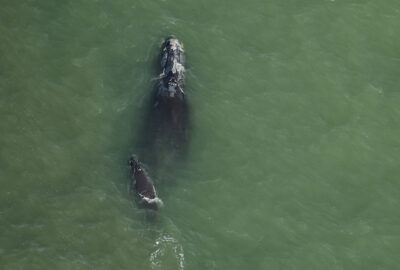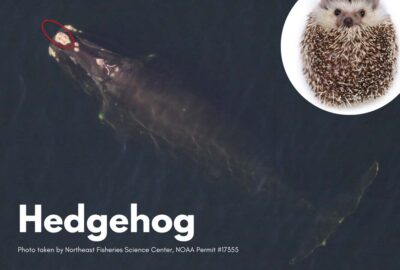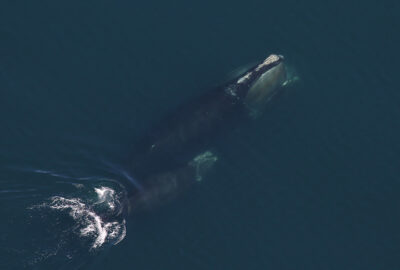Dolphins, Leatherback, Orca - Oh My!
By Amy Warren on Sunday, August 30, 2020

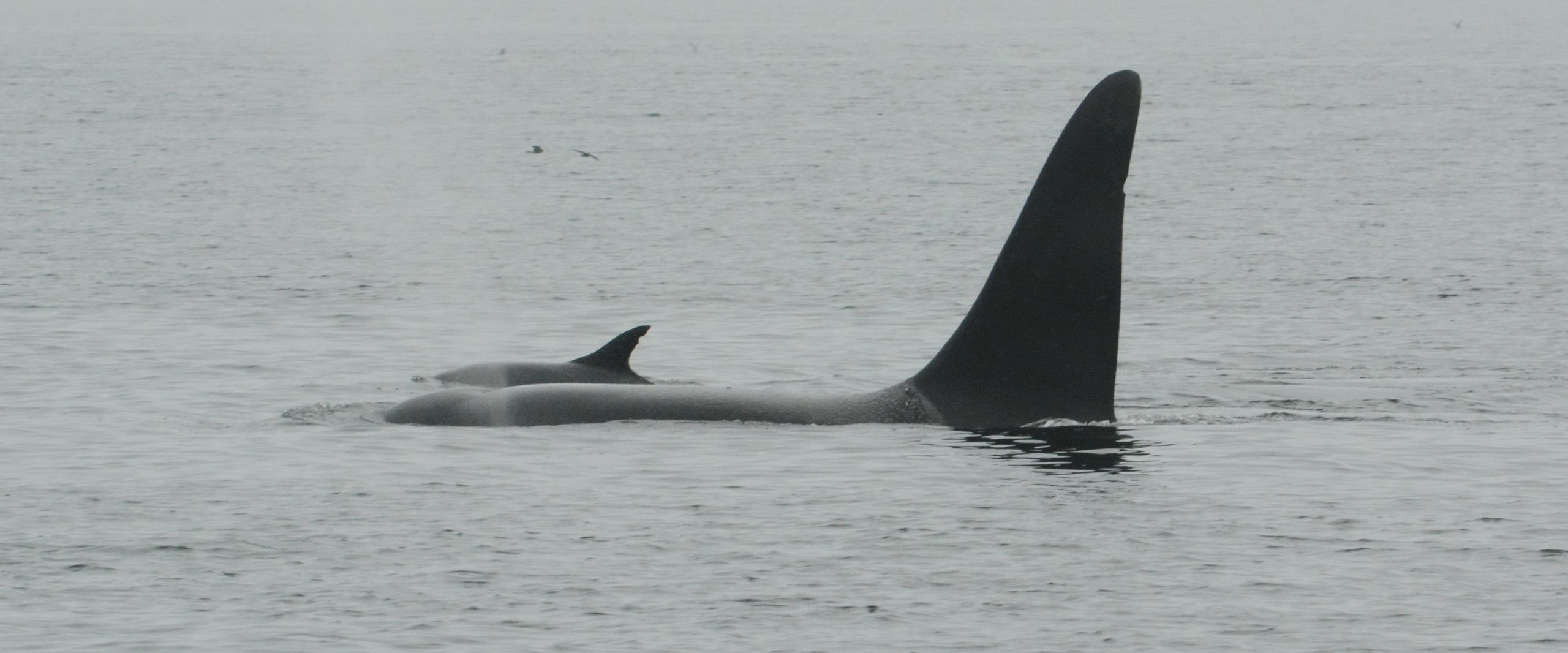
While the Right Whale Research Team is still waiting for the first right whale sighting of the season, there has been no shortage of interesting observations in the Bay of Fundy (BOF). You might think that researchers who spend a good portion of their lives on the water would get complacent when it comes to marine sightings, but with our team, that is not the case. For us, each and every sighting is an interesting window into the mysteries of our vast ocean. Our survey on Monday, August 24, was no exception.
The day dawned alongside our nemesis, the fog, making the decision to survey a challenging one. With help from the folks at Grand Manan Whale & Seabird Research Station, we decided to delay our departure a bit and headed into the fog about mid-morning. It was tough to stay optimistic about the weather when the first hour out into the Bay was spent in very thick fog, but we finally broke free of it and found some sunshine and good visibility. We knew there were still areas of fog to contend with but given that high winds were predicted for the rest of the week, we opted push ahead with our planned survey.
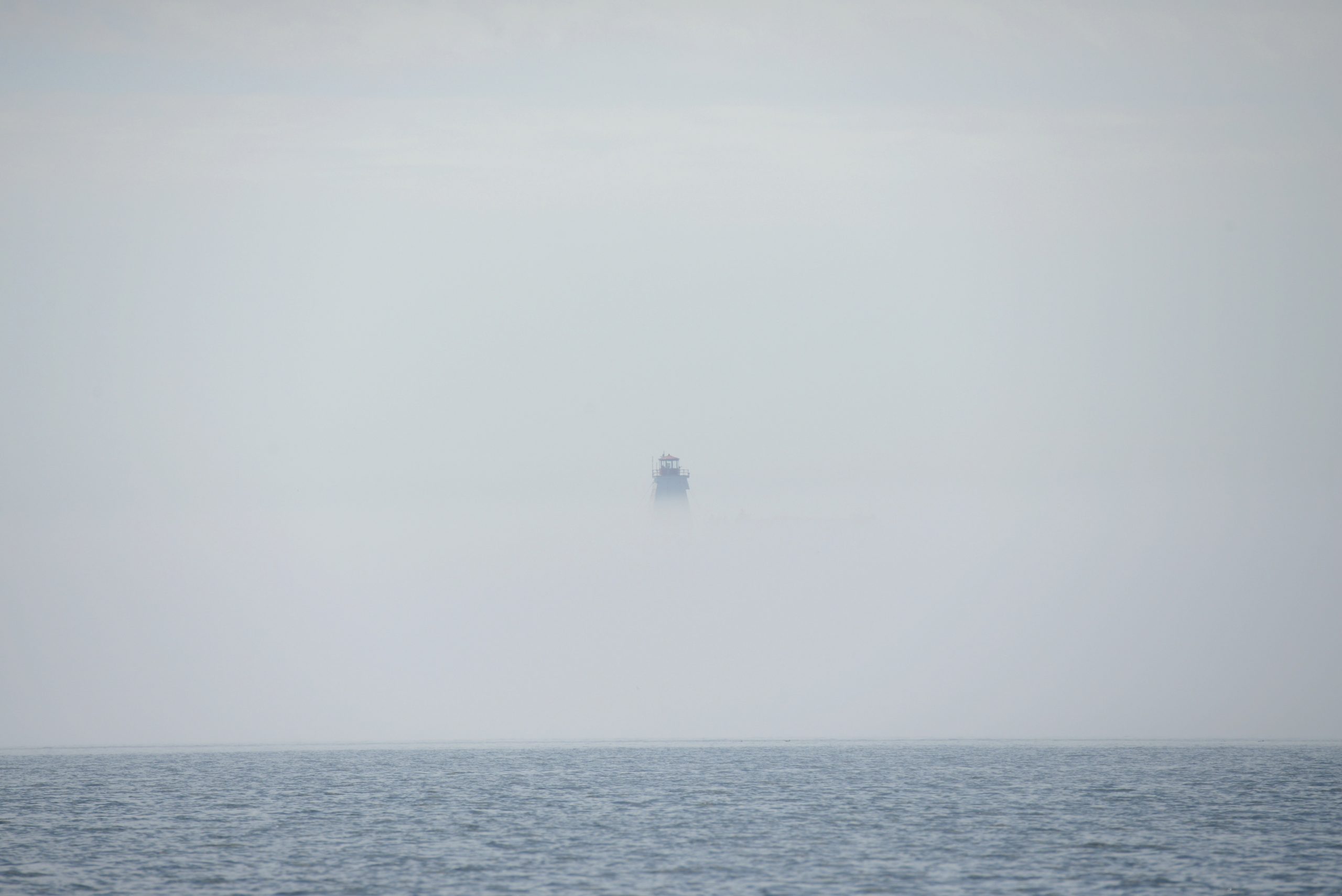
Our efforts paid off when we came across a Leatherback sea turtle! Leatherbacks are the largest sea turtle species and are rarely seen in BOF. This is only the team’s fourth sighting of a leatherback in the Bay since 1987! Leatherbacks are one of the earth’s most migratory animals. In the Atlantic, they can be seen feeding as far north as Newfoundland and nesting as far south as the Caribbean, a nearly 8,000-mile round trip migration. They also have special metabolic adaptations that protect them in colder temperatures and can dive to depths of 4000 feet. Check out this blog post for some interesting work being done with leatherbacks by our colleagues.
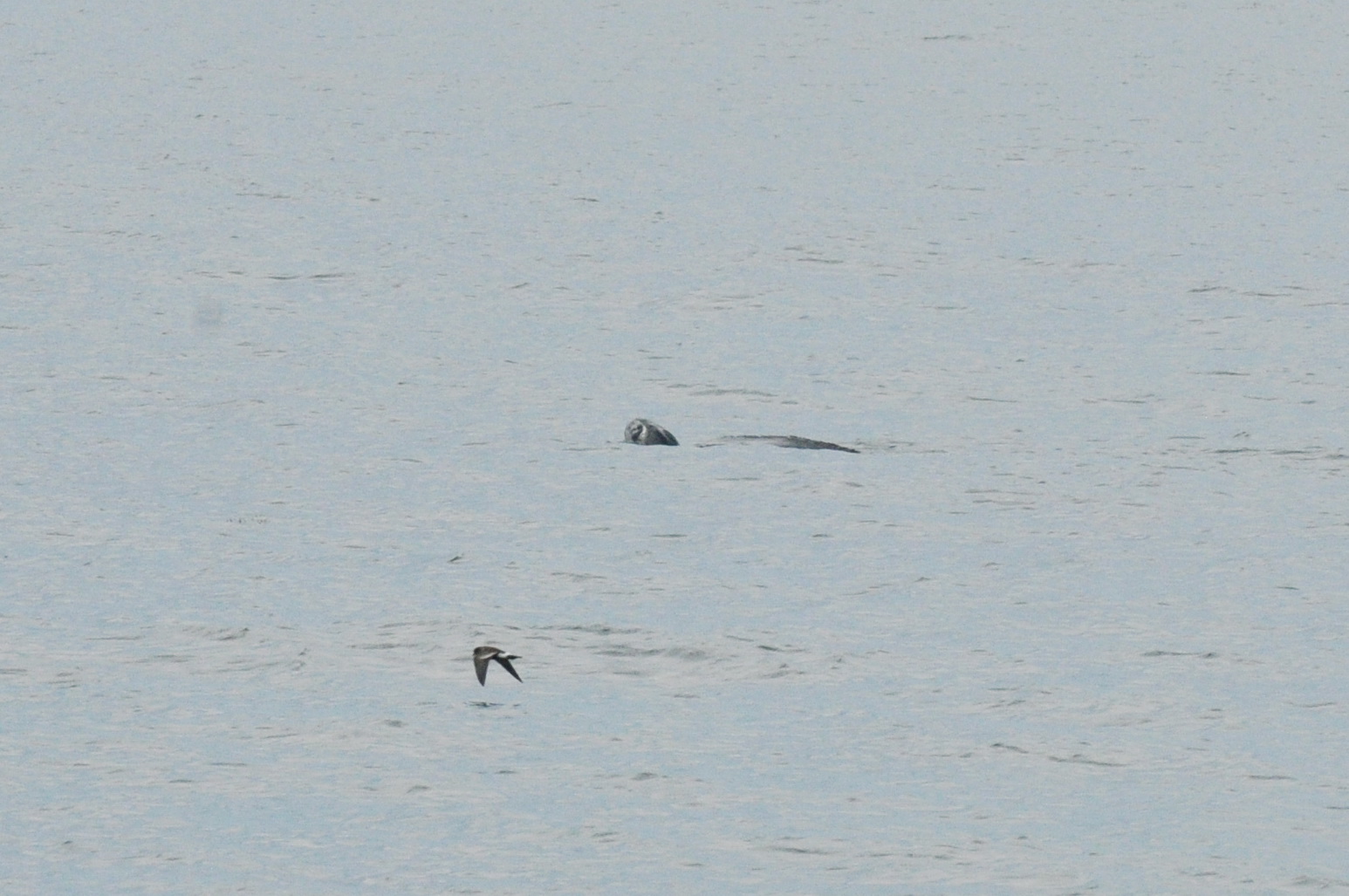
As we continued surveying the Bay while circumventing the fog, we came across an area of perfectly glassy, calm water with good visibility. We decided to shut down the boat and listen for whales. Alas, no whales, but we did spot a pod (family group) of dolphins in the distance and decided to check them out while charting a course for home. We were treated to a very playful and aerobatic group of Atlantic white-sided dolphins—with several of them jumping more than six feet in the air!
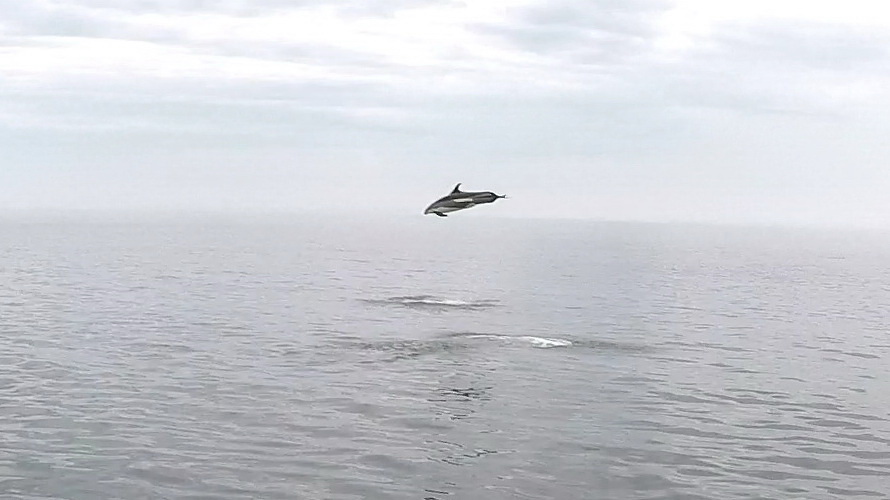
While making final decisions for our return trip, we heard a blow off in the distance. It was too far to distinguish what type of whale it was; so we decided to investigate. With fog once again creeping in, Marianna and Marilyn were on the bow with binoculars and soon spied a tall dorsal fin as it slowly emerged from the water—a fin that could only belong to a male orca whale! As we approached, we came across another group of Atlantic white-sided dolphins, and as the orca appeared among the dolphins, we also noticed a finback whale nearby. The large blow, or exhale, of the finback whale is likely what we heard from the distance, thankfully directing us to the presence of the orca and dolphins! As the fog continued to roll in all around us, we realized if we’d arrived any later we may have never spotted this fun sighting.
We quickly realized the orca was none other than Old Thom, an individual seen throughout the Gulf of Maine, identified by a small indent in his very tall dorsal fin. Orcas (also known as killer whales) are actually the largest species of dolphin and usually live in pods. When seen, Old Thom is rarely with other orcas (a population in the Northwest Atlantic does exist!), but is often accompanied by a pod of his smaller dolphin relatives. The white-sided dolphins kept us entertained by riding the bow waves of our boat while Old Thom was out of view, spending several minutes under the surface between breaths.
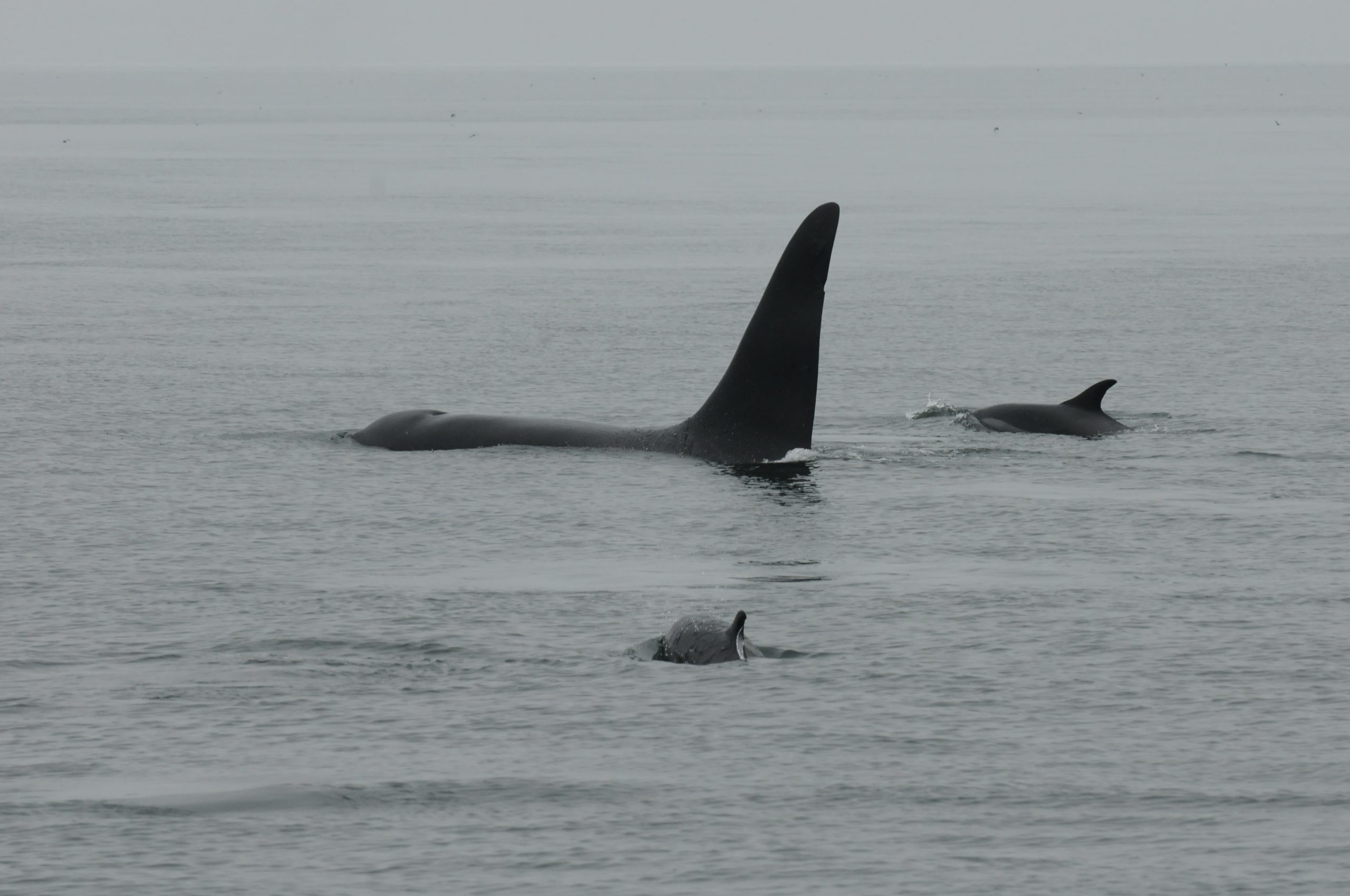
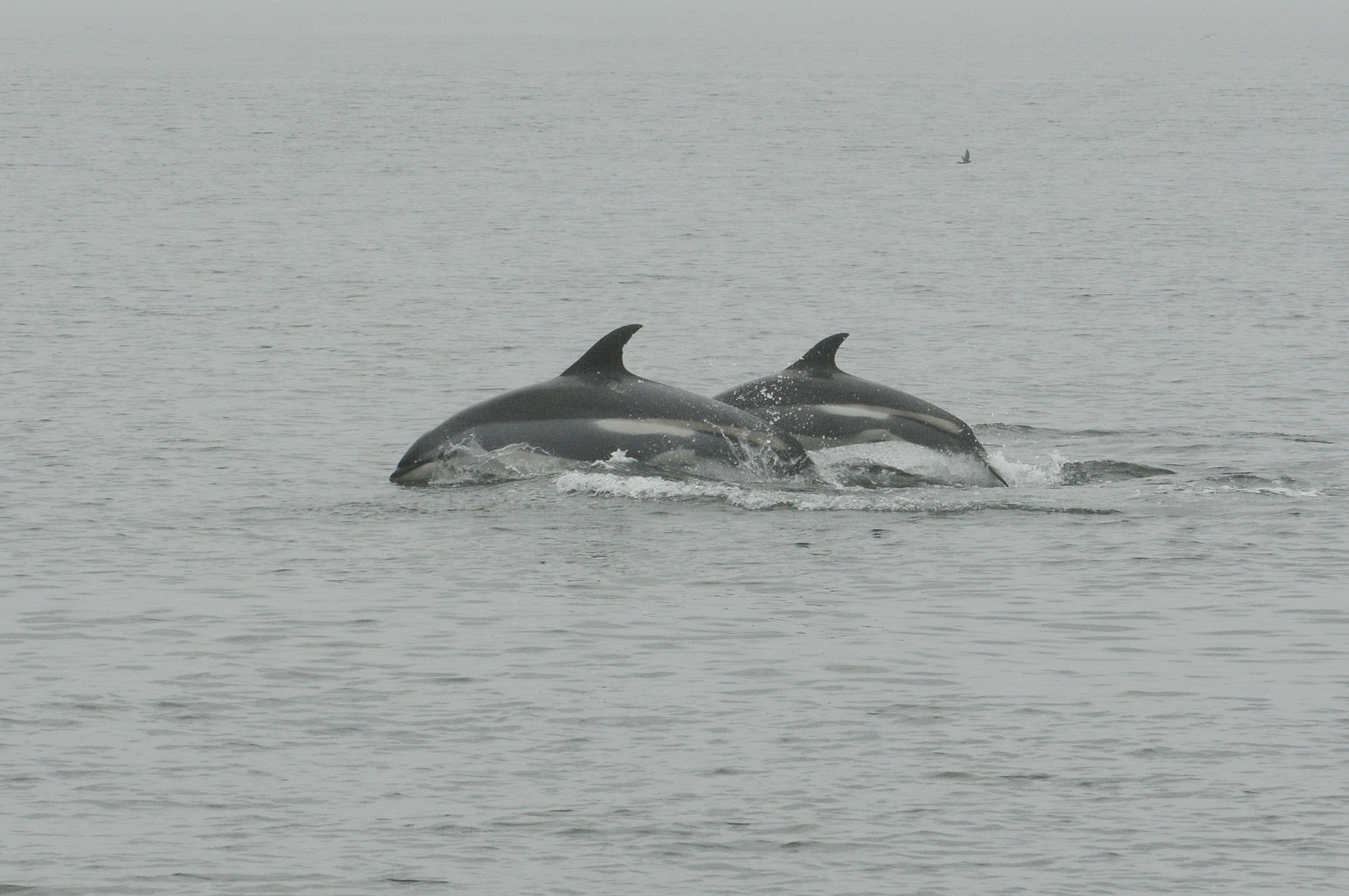
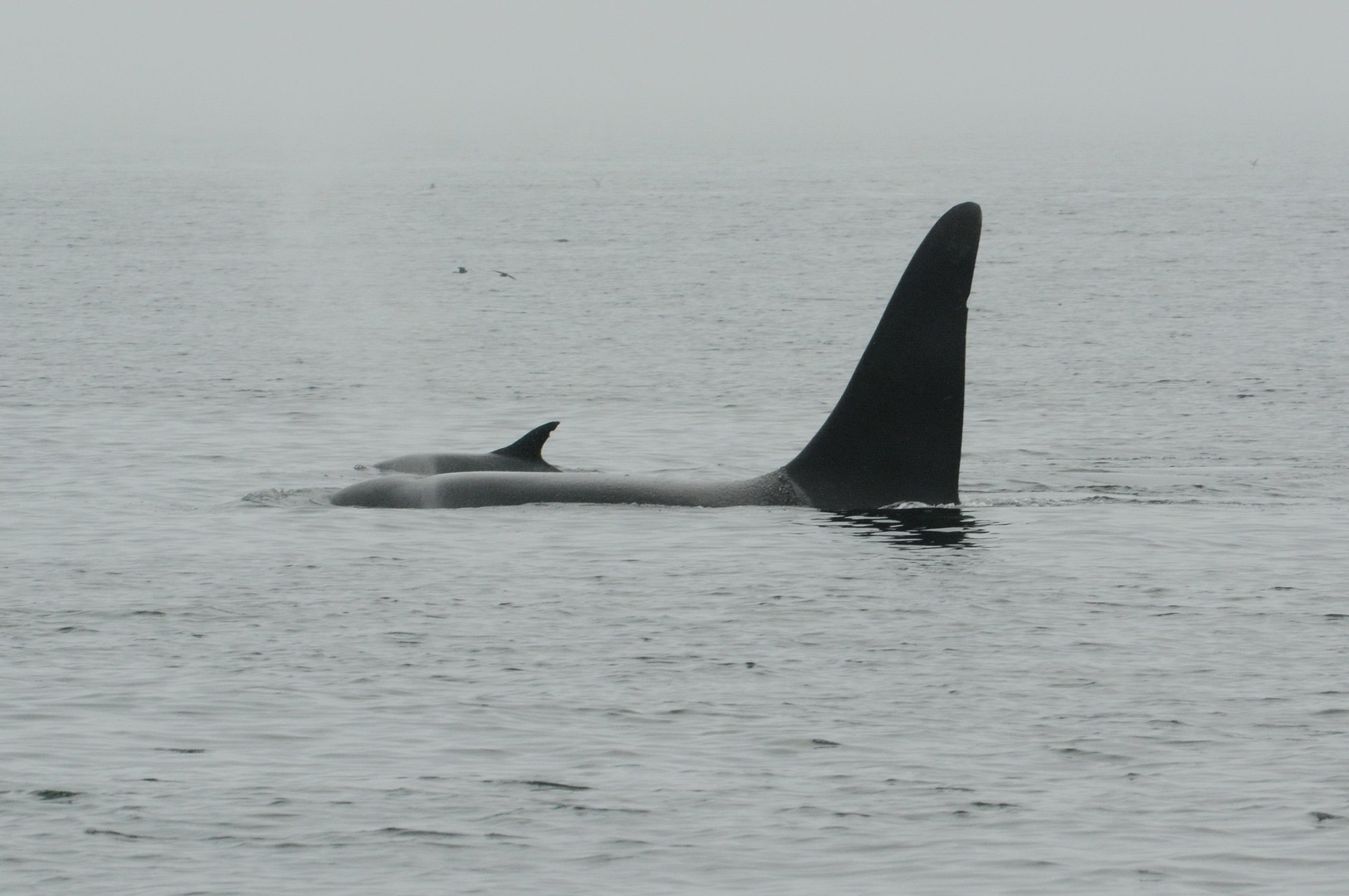
Any sighting of an orca in the Gulf of Maine is rare and very exciting, and it was especially thrilling for me as it was my first time seeing one! Lots of researchers, fishermen, and boaters who spend most of their lives on the water in New England have never seen an orca. It’s quite an unforgettable sighting!
This work is made possible in part by the generosity of Irving Oil, lead sponsor of the New England Aquarium’s North Atlantic Right Whale Research Program.

